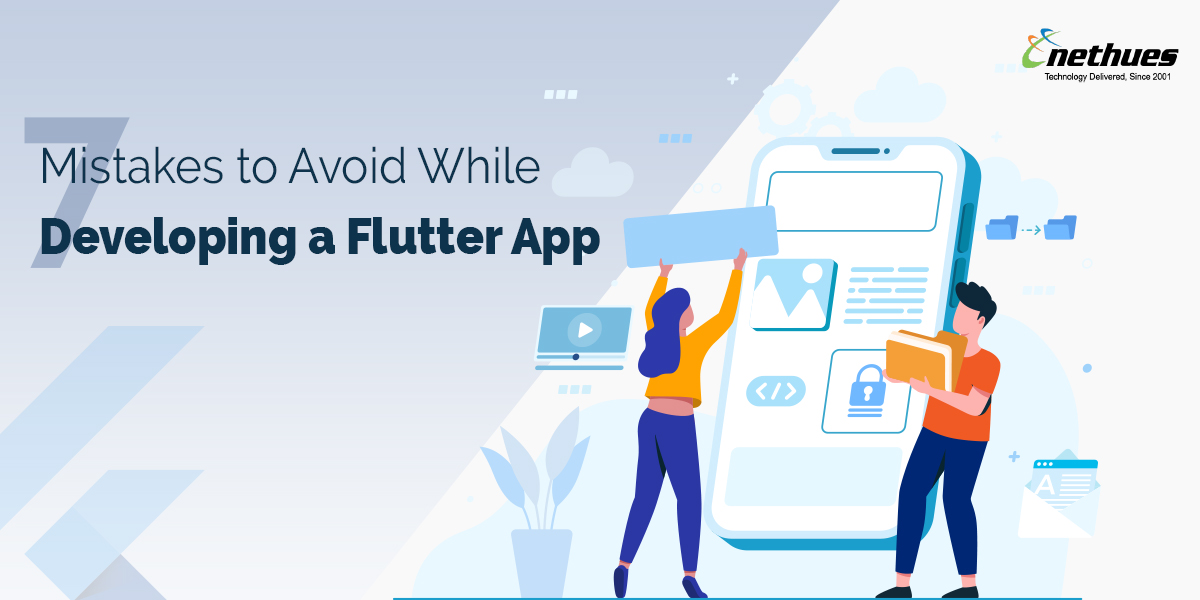Flutter is a versatile programming framework that caters to a diverse range of industries. The development of mobile applications using Flutter offers numerous benefits, primarily in cost reduction. The framework's adaptability, user-friendliness, and high performance have made it a popular choice among developers for cross-platform mobile app development.
One of the key reasons behind Flutter's growing popularity among the developer community is its quick loading and outstanding user interface and experience. Consequently, developers are increasingly utilizing Flutter for creating large-scale smartphone apps. Despite this trend, app developers often overlook minor errors that can significantly impact the application's performance.
In this article, we highlight top Flutter Development Mistakes.
Let's discuss.
Neglecting Flutter Updates
As a rapidly evolving framework, Flutter undergoes frequent updates and introduces new features. Failure to stay up-to-date with these updates can result in outdated code, compatibility issues, and a missed opportunity to leverage new and improved functionalities.
In the past, leading mobile applications that failed to incorporate new updates suffered significant consequences and struggled to maintain their status as the fastest-growing software. To avoid similar Mistakes in Flutter App Development, it is essential to adopt new strategies and stay current with the demands of the industry during the Flutter Development process.
Neglecting Platform-Specific Guidelines
While Flutter simplifies the development of cross-platform applications, it is important not to neglect the platform-specific guidelines for iOS and Android. Disregarding these guidelines can result in negative user experiences and even lead to app rejection in the app stores.
Remember that Flutter is a UI framework that transcends platforms and allows for building apps using one codebase. Remember to keep in mind that each platform has unique design rules and user experience patterns. These must be followed to ensure consistency and avoid poor user experience. To make this process smoother, you can hire Flutter developers.
Neglecting State Management
Developing Flutter apps without proper state management techniques can result in bugs, poor performance, and unmaintainable code. Since Flutter is built around the reactive programming paradigm, it is crucial to implement efficient state management practices. There are various state management solutions available, including Provider, Bloc, Redux, and MobX. It is essential to select the most suitable state management approach to ensure optimal performance and ease of maintenance based on your app's complexity and specific needs.
Relying Too Much on Plugins
Flutter is backed by a thriving community of developers who are constantly creating plugins and packages to enhance its functionality. These plugins and packages can prove to be valuable additions to your app, as they provide access to a wide range of features and tools that can help you build a better product.
However, it's important to exercise caution when using third-party plugins, as they can sometimes introduce dependencies that may cause issues down the line. By being mindful of your dependencies and keeping your app's maintenance in mind, you can ensure that your Flutter app remains stable and reliable over time.
Not Paying Attention to App Size
Flutter apps can expand in size if proper attention is not paid. This can affect the user experience. It is crucial to avoid incorporating irrelevant libraries or assets and focus on optimizing the code for enhanced performance. When the app size exceeds a reasonable limit, it can cause slow loading times and take up valuable storage space on the user's device, thereby negatively impacting the user experience. Such issues can discourage potential users from downloading and engaging with the app, leading to a drop in downloads and usage. Therefore, it is essential to pay attention to the size of the app to ensure a seamless user experience and drive engagement.
Not Testing Your App Properly
The software development process requires careful testing, which also holds for Flutter. To avoid potential issues such as malfunctions, crashes, and poor user experiences, it is advised to hire dedicated developers who can test your app thoroughly. This can be done manually or by utilizing Flutter's pre-built widget testing and third-party testing libraries.
Testing is a critical aspect of app development that should not be ignored, as it enables the detection and resolution of errors, thereby ensuring the app's reliability and stability. Taking the edge of Flutter's built-in testing framework and creating comprehensive test cases to facilitate automated testing is advisable.
Neglecting Performance Optimization
Overlooking performance optimization can lead to sluggish and slow applications. To achieve the desired performance, it is crucial to avoid executing time-consuming computations on the main thread, minimize unnecessary widget rebuilds, optimize network queries to reduce latency and implement efficient data structures that can handle large amounts of data without slowing down the app. By following these guidelines, you can significantly improve the speed and responsiveness of your application, providing a better user experience.
To Sum Up
Developing a mobile application is a highly challenging task as it involves integrating various platforms, from code development to UI design. Despite the natural tendency to make mistakes during the Flutter app development process, it's crucial to learn from them and make improvements.
To build a successful Flutter app that meets your users' needs, avoiding these Mistakes in Flutter App Development is crucial. Hiring Flutter developers is a wise decision to help you avoid these mistakes. Contact our experts today to make your app development process more efficient.






Comments